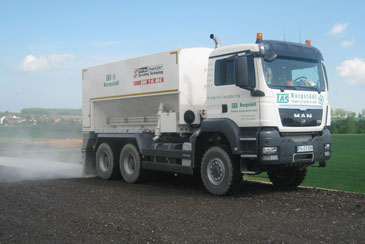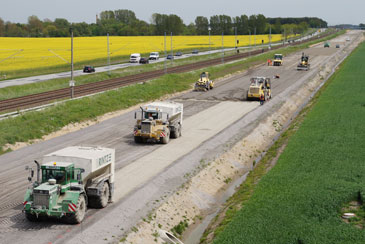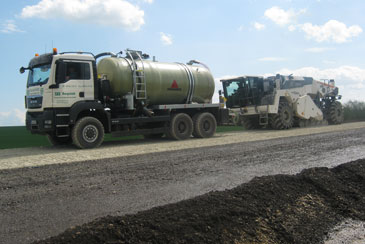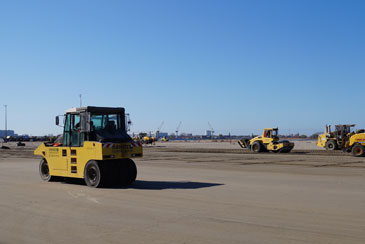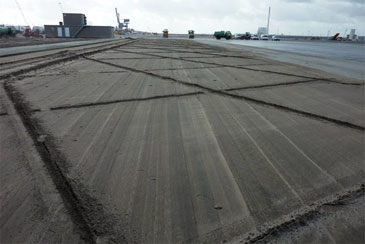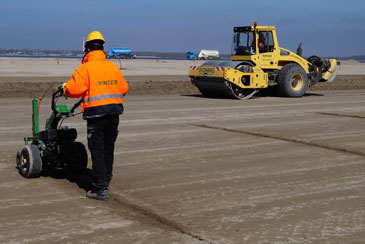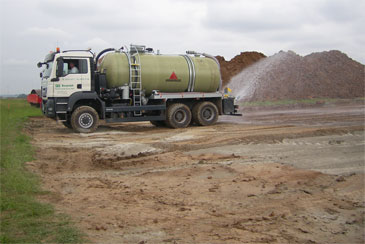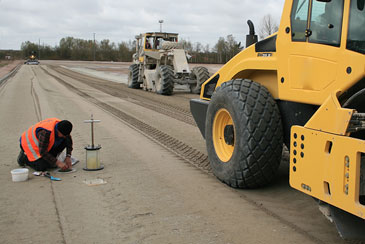Using cement for soil stabilization
We supply everything from logistics up to the final plane; no need for several companies.
Ground stabilization through cement increases particle cohesion considerably and makes the ground much more durable and frost prove.
In very humid weather conditions or for soil which naturally contains a lot of water, water repellent cement is of advantage. It does not react with soil once dispersed but when milled.
The amount of binder used determines the ground’s strength of compression.


